#adeptus administratum
Text

commorragh business time
#plasmdraws#hematyla#art#warhammer 40k#wh40k#warhammer 40000#wh40k art#dark eldar#drukhari#adeptus administratum
108 notes
·
View notes
Text

Iocasta, fencer in the service of the Komnenos Rogue Traders Dynasty Maharian sector, Proteus system, Cyrus world, circa M41
Commission art
340 notes
·
View notes
Text
Say hello to your Warhammer 40k Healthcare team!
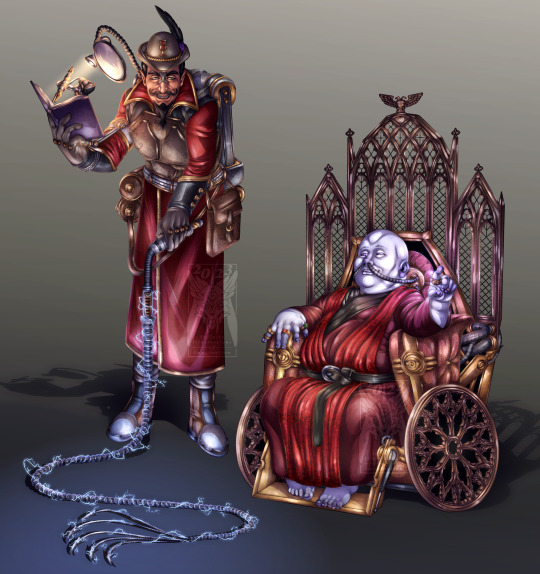
On the left we have “The guy you can’t sue for medical malpractice because he’s a part of the Administratum and knows all the clerical loopholes” and on the right we have “Your mental health provider, the Psyker who seems out of touch with reality and expresses a pronounced disregard for the health part of his job.”
These two will make quite the pair of interrogators for the Inquisition in the Dark Heresy campaign I’m playing in 😈
#My Art#OC: Vincenzo Aperio#OC: Elmer#Warhammer 40000#Warhammer 40k#40k#wh 40k#Adeptus Administratum#Adeptus Astra Telepathica#Psyker#Chirurgeon#Inquisition#Dark Heresy#TTRPG
17 notes
·
View notes
Text
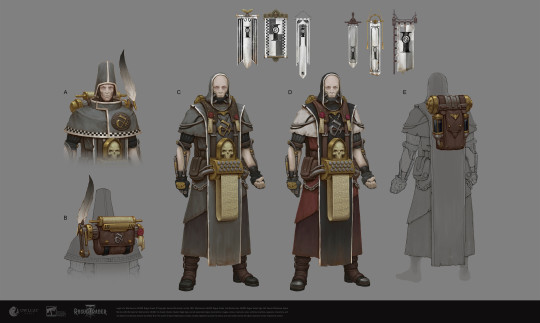
Rogue Trader - Adeptus Administratum NPC Concept Art by Ilia Bodaikin
12 notes
·
View notes
Text
Sign Language in the Human Imperium
Losing one's voice and/or hearing due to injuries is fairly common in the Human Imperium. A lucky survivor might be able to acquire bionic hearing augments or synthetic vocal chords. But the vast majority have to make do with Imperial Sign Language.
There are three major branches of ISL: Standard, Militarum, and Ministorum.
Standard ISL is taught in workplaces where hearing loss is a common risk. It also allows supervisors to issue directions to workers while allowing workers to efficiently report to their superiors. It is also used by Adeptus Administratum clerks to convey data to each other quietly from across distances.
Militarum ISL is used within the Imperial Guard to quickly communicate tactically vital information. A standardized lexicon is taught to medium and high quality infantry units while low quality penal legions are "spared" such training. Given the risk of the enemy deciphering standard communications, and the sheer variety of enemies that the Imperial Guard face, IG companies wind up developing their own unique dialect.
Ministorum ISL is typically used to convey sermons by those who have made vows of silence or to congregations which are mostly deaf. It uses grand sweeping gestures derived from and used in sacred rituals. The Sisters of Battle use a simplified version of the language that resembles the type used by Imperial Guard.
#ASL#sign language#warhammer 40k#world building#linguistics#ISL#warhammer 40000#human imperium#imperial guard#sisters of battle#writing#worldbuidling#adeptus administratum#adeptus ministorum#adeptus ecclesiarchy#astra militarum
13 notes
·
View notes
Text
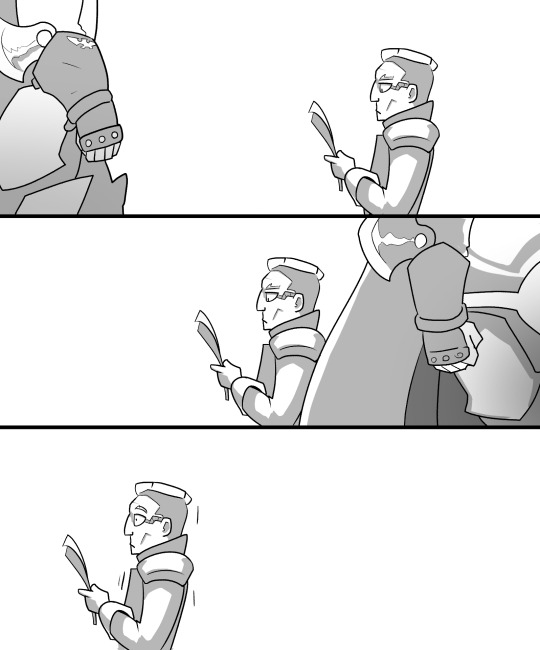


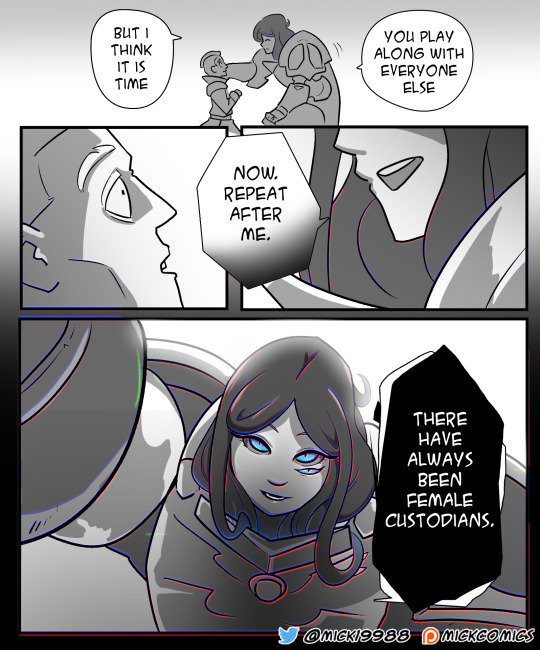
Change
by Mick19988
#fun#imperium#chaos#tzeentch#adeptus custodes#administratum#warhammer#warhammer 40k#warhammer 40000#40k#mick19988#sketch#monochrome
563 notes
·
View notes
Text
As an IRL obstructive bureaucrat, it saddens me that the Administratum don't have their own military like the Ecclesiarchy or Admech.
I know they control the Ordo Tempestus, but I'm thinking more like a vast army of tanks that look like filing cabinets and stapler-shaped heavy bolters and so on. Power-armoured battle scriveners covered in requisition permit purity seals going on Rectification Crusades to forcibly make reality match with their records.
++ AS PER OUR PREVIOUS ASTROPATHIC MESSAGE THE POPULATION OF YOUR WORLD IS HIGHER THAN THAT RECORDED IN THE ANNALS OF TERRA ++
++ A SUITABLE CORRECTION WILL BE MADE FROM ORBIT ++
++ YOU CANNOT FIGHT CITY HALL ++
52 notes
·
View notes
Text
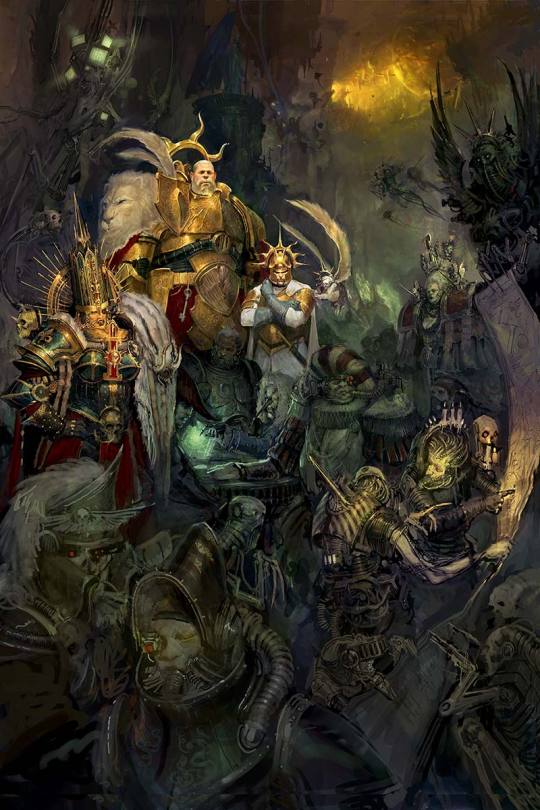
Solar Council
by Lewis Jones
#imperium#high lords#lords of the imperium#noble#administratum#adeptus terra#imperial guard#guard command#arcadian leontus#custodes#trajann valoris#ecclesiarchy#priest#inquisition#inquisitor#servitor#servo skull#cherub#grimdark#lewis jones#40k
20 notes
·
View notes
Text
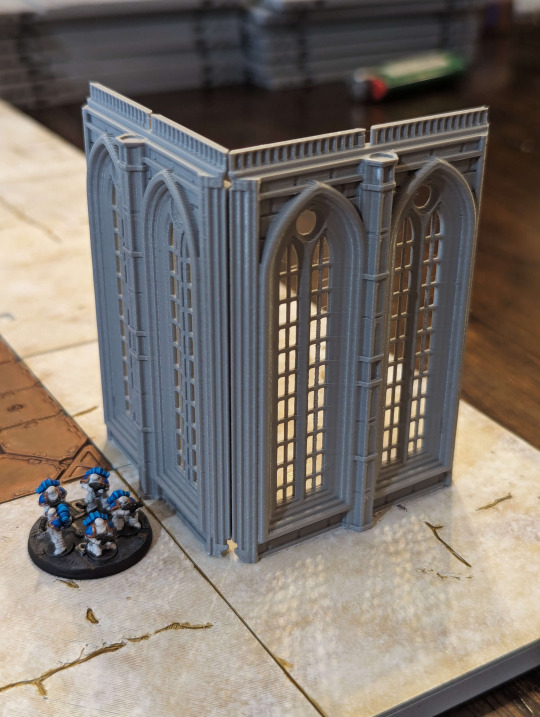
My gaming group is going hard on both Legions Imperialis and 3d printing, so here's a test print of some Grimdark Terrain on a Dragon's Rest city tile, next to some KMFP Designs Orbital Knights for scale. The 8mm madness is upon us and we're doing a bit of proof-of-concept in preparation for a campaign.
Remarkable what a modern filament printer is capable of producing, and with only a 0.4mm nozzle at that. Can't wait to see what the 0.2mm is capable of.
#games workshop#warhammer 40k#warhammer 30k#horus heresy#legions imperialis#grimdark terrain#bifforium administratum#dragon's rest#terraforma epicminium#kmfp designs#orbital knights#adeptus astartes#legiones astartes#heretic astartes#chaos space marines#traitor legions#world eaters#terrain#3d printing#personal
25 notes
·
View notes
Note
*bursts into your ask box like the Koolaid Man, seeking the Imogene deep lore* :D
Who were Imogene's family and what sort of relationship did she have with them? Was there anyone (parent or sibling) that she had a particularly close or difficult relationship with? Is there anyone of them that she still keeps in touch with?
Best/worst childhood memories?
Also -- what motivated her to pursue a governorship?
Took me a while, but behold! (hiding under read more for some tw)

*cracks knuckles*
Imogene has two older brothers from her father's first marriage (that sadly ended when his first wife died of illness shortly after giving birth to their stillborn daughter), and loves them dearly.
The eldest de Vahl heir, Rhyce, is serving as a commissar in the Imperium army back in the Calixis sector, and always had a soft spot for Imogene. He is the reason she was determined to learn how to tinker and build her own lasgun - she absolutely wanted to be like him when she grew up :) But as it later turned out, her stubbornness and bullheaded drive for more were better suited for other careers.
Gavin, the younger of the two brothers, joined the Priesthood of Mars as the family tradition required. This caused a fair bit of detachment from his biological family, as he was required to fully commit to his role and, in time, become a Tech-Priest Artisan. That meant at least he served on their home planet and could be pestered by his teenage sister about things he should not share with laymen. I think Imogene trained her future gift of persuasion on Gavin :D
Observing the wonders of the Adeptus Mechanicus creations on the forge world she lived on has to be something she remembers most fondly from her childhood. To this day, she experiences this childlike wonder when faced with technology beyond her comprehension.
Imogene's parents…were there. It is a very good and caring relationship they share, as they married for…well, let's call it affection and aligned goals in life. She doesn't have a poor relationship with either of them, but neither is she overly close. They gave her the best they could afford, and it was a lot, set her on a path of a career in the Adeptus Administratum, but she was too ambitious to settle for being a clerk. It was that ambition that always drove her forward. So kind of against the wishes of her parents but with their begrudging blessing she left her homeworld as a protégé of an influential political figure and after two decades she got hold of a planetary governor title of a snazzy little planet somewhere in the Calixis sector :)
Thank you so much for giving me the opportunity to come up with more imaginary people! :D
#I maaay be a bit obsessed#but it's good for me I promise#OC:Imogene#rogue trader#tw child death#tw stillbirth#let me know if this needs more tags
8 notes
·
View notes
Note
hey my friends have been getting me into warhammer via darktide! i asked a question that neither my friend nor any wiki could answer, so i put it forth to you for consideration, speculation, etc:
how is ogryn formed? how is ogryn get pregante?
So the parent ogryns have to fill out and submit a form (in triplicate) to both the administratum and several divisions within the Adeptus Mechanicus. Owing to the literacy of the average Ogryn, this process tends to take, appropriately, about nine months.
The processing of the forms and signing off for Ogryn Deployment is actually fairly quick. Part of the form-filling includes relaying the name of your planet, and your geographical coordinates. This is so that the Mechanicus can launch an Interplanetary Ogryn Gestation and Delivery Pod (IOGDP) to the exact location of the parents, providing them with an efficient baby delivery service in the way that only trained techpriests can.
The Ogryn fetus itself, on launch, is actually a fairly effective blend of cloned human STEM cells and various stimulants, wrapped around a servo-skull and suspended in a large tube of heat-activated growth-acceleration fluid.
When the IOGDP enters the atmosphere of the parents’ home planet, the heat generated by said entry causes the growth fluid to activate, setting off a chain reaction that grows an entire Ogryn baby with frightening speed.
The parents, of course, know none of this. They are simply alerted to the arrival of their child by a loud bang from the living room, and may venture in to find, within the crushed remains of a coffee table, a smoking metal tube, front-hatch open, containing a burbling, oblivious Ogryn infant.
66 notes
·
View notes
Note
Yaknow me and my freind both decided to get into warhammer(the tabletop game) after some time of loving the lore, we both just decided “hey, who cares about meta, let’s just get armies we like lore-wise!”
We bought some combat patrols and I picked mechanicus and he picked custodes
Needless to say 10th edition has been cruel to me
Even with running my enginseer as a dominus and a skitarii marshal for my skitarii rangers he still wins most of the time
Luckily I’ve found out due to base sizes being pretty similar, I can sub out most of my army for harlequins, another army I love lore wise but are not dicked over by 10th edition
my lass you are going up against the fucking adeptus custodes
like, in canon the adeptus administratum would write down battles with the custodians as "victories" before they even happen
12 notes
·
View notes
Text
Were I working for the Adeptus Administratum at this point this month I'd be legally allowed to shoot 3 people with my standard issue office bolt pistol for their incompetence.
6 notes
·
View notes
Text
The Redemptor Roses ("Fulgrim's Faithful")
In the Grim Darkness of the Far Future, there is only war.
The return of the Emperor’s Avenging Son, Robuote Guilliman, has kindled the Era Indomitus, in which the Empire’s ailing defenses have been shored up, and glorious offensives finally undertaken against the forces of Chaos, which have long had mankind on the defensive. It is an era of hope and glory of a kind unseen since the Horus Heresy.
Yet in the dark immediately preceding Guilliman’s return, and the unveiling of the Primaris Marines, a desperate Imperium was forced to consider other, less savory prospects for restoring the Empire’s strength and filling in the holes in the Adeptus Astartes’ defenses. One of these prospects, was itself, ironically rooted in the opposing side of the Horus Heresy that had left the Empire so broken.
Guilliman had not yet returned. The Imperium did not yet know of the plans to restore the Avenging Son to life. The Space Marines were battered, Cadia had fallen, and the imperium was left reeling from the after effects of Abbaddon’s 13th Black Crusade. Gene-seed stores were, as far as anyone knew, the lowest they’d been in millennia. It was a time of darkness and desperation. In this dark time, the High Lords of Terra conspired to create a light, and it would come from a most unexpected source: the gene seed of their mortal enemy. The only gene-seed stores the Imperium retained in great quantity at this time were those of the Traitor Legions, left unused for fear of the risk that crafting new Space Marines from sources that had ultimately turned traitor might present. But, desperate times, as they say, call for desperate measures, and the need to defend the Imperium was paramount.
After much deliberation, the order was reluctantly given.
A test run.
A single Astartes Chapter, forged from the gene seed of one of the traitor Primarchs, powerful enough to be of use, but not so powerful that they couldn’t be eliminated if they Fell.
The Primarch was chosen with great care. Some, like Angron, had to be discounted out of hand – even before the collapse of the World Eaters and their Primarch into joining the Heresy, they had been possessed by an intrinsic violence. Pre-Heresy behavior had to be noted as much as their Corrupted behavior. For several years, The High Lords, Inquisition, and Adeptus Administratum scoured Imperial records that had not been used in over 10,000 years, studying their options carefully.
In the end, they came to three options: Horus Himself, Magnus the Red, or Fulgrim - the Phoenician of the Emperor’s Children. Horus was rejected - as the Warmaster of the Heresy itself, it simply raised too many concerns. Magnus was a strong contender, as his support for the Heresy only followed Leman Russ and the Space Wolves’ attempted destruction of him and his legion for an action that HAD been well intentioned for the defense of the realm. Still, his psychic potential and that of the Thousand Sons gave the High Lords pause, as it came with a strong potential for Warp Corruptions.
Ultimately, Fulgrim was chosen. The Emperor’s Children had once been the glory of the Imperium, the only legion permitted by the Emperor to bear his own standard and his name. They had embodied all that it meant to be a Space Marine. Furthermore, Fulgrim’s corruption, and that of his legion, began on Laer, with the claiming of a Demonically Possessed blade. It was the judgment of the Inquisition many centuries earlier that, absent the corrupting effects of the Greater Daemon of Slaanesh inside the Blade of the Laer, Fulgrim’s fall could have been averted. It was therefore the hope of the High Lords that, absent such outside influences, Fulgrim’s potential descendants might live up to the best of the Emperor’s Children’s legacy while avoiding their ultimate corruption.
The crafting of the chapter was carried out in utmost secrecy, with no less than the vaunted Grey Knights themselves overseeing the security of the initial stages, while observers from the Sisters of Battle and the Ordo Malleus of the Inquisition oversaw the later stages.
The story fed to the Imperium at large was that the new Chapter was of Ultramarines descent. With the amount of existing Ultramarines Successors, it was anticipated that nobody would question or resist one more. This story was also fed to the new chapter, which was initially founded under the name “The Falcons of Calth”.
The Falcons of Calth were soon assigned to the Orders Militant of the Inquisition’s Ordo Hereticus, and often found themselves working alongside the various sisterhoods of the Sisters of Battle. The Falcons of Calth proved their value in every engagement, rising with honor and courage to become highly regarded Marines. Like the Ultramarines they believed to be their parentage, the Falcons of Calth embraced a Combined Arms and Logistics-focused method of warfare, but did so with a certain “knightly flair” that organically developed over the course of their frequent collaborations with the Sisters of Battle. They came to respect and admire the fighting women who were their closest and most frequent allies, and as the Chapter approached their 89th year of service, swore an oath to always defend and support “their cherished ladies”, and it was around this time that the emblem of the Rose first began to become prominent throughout the chapter. From this point on, the Falcons of Calth pursued a more idealized and chivalrous aesthetic and mode of behavior, finding inspiration in surviving tales of the Knightly Orders of Old, comparing them to the various Space Marine chapters in the modern day. Incorporating ancient notions of noble conduct, brotherhood, chivalry, and courtly love into their traditions, the Falcons began to diverge from their supposed Ultramarine sires, which raised some alarm among the Inquisition, who pledged to watch them more closely for signs of heretical leanings.
Ultimately, these leanings failed to manifest, and in the very month prior to the return of Roboute Guilliman, the Falcons of Calth were declared a successful trial run of the High Lords plan to produce emergency backup chapters from unused pre-heresy gene seed stocks. Guilliman’s return torpedoed the project, however. Greatly angered by the audacity of the program, he had it shut down immediately, and it was under these circumstances that the Falcons of Calth learned of their true origin when they sought approval from their “Grandfather” – Guilliman denied them, and in a rare moment of genuine fury, revealed enough that the Inquisition decided that keeping the truth from the chapter was going to become impossible in short order. Under these conditions, the decision was made to reveal the truth.
The Falcons of Calth had heard all about the Horus Heresy, of course. But to discover they were descended from the gene-seed of one of the most infamous traitors in Imperial history… that obviously landed more heavily upon the Falcons. The reveal brought a great clarity to the brothers of the Chapter, as they realized that the Sisters of Battle and the soldiers of the Ordo Hereticus, their most trusted and beloved allies, had been under orders to constantly observe them and report back, and to purge the chapter if necessary.
The Truth was a tipping point, the most vulnerable moment in the chapter’s history. Confronted with near betrayal, but most certainly breached trust and wounded pride, it would be recorded that at no other point was the chapter more at risk of turning traitor. Yet armed with full knowledge of the failures of those who came before them, and the understanding of why they had been made, the Falcons held fast to their loyalty, meeting the truth with flexibility and understanding.
Casting aside the Falcon as their sigil, they embraced the Rose, a symbol they had chosen for themselves, and one more heavily linked to the chivalrous past they sought to emulate. Little over a century after their Founding, the Falcons of Calth were no more, and the Redemptor Roses stood in their place. Sometimes referred to as “Fulgrim’s Faithful” within the Inquisition, the Roses have leaned into their Knightly visage since learning the truth of their origins. Standing by their oath to support the Sisters of Battle, they serve as true companions for the fighting women of the Ecclesiarchy, supporting them in battle, and even engaging in the tradition of courtly love off the battlefield. These self-proclaimed knights have taken it upon themself to be a model of what they believe a Space Marine should be: a consummate soldier, but more than that, a warm and protective image of nobility for the common souls of the Imperium to look up to, aspire to become, and take shelter beneath. Like the Salamanders, they prize defending the common people of the Empire. Like the Ultramarines, they seek professionalism and excellence in their conduct. And like the Blood Angels, they constantly desire to add beauty to the galaxy through art, poetry, music, and philosophy, as well as defend that beauty which already exists.
They withdrew from Calth, returning the world to the control of the Ultramarines and their successors, and established a new home world, one fit for their redemption, Quatora Prime. Located not far from the Realm of Ultramar, Quatora Prime is a world of great extremes: a single arid supercontinent surrounded by a vast, freshwater ocean. Determining this as a place from which they could establish a bastion of those knightly and aesthetic values they prized, they set about transforming a large stretch of the Northeast Coast of the Continent into a slice of a well manicured garden world, with a presently small but thriving population eager to continue the terraforming project. While life outside civilized spaces is greatly dangerous, inside those spaces is a great and rising fiefdom where citizens live in relative comfort and safety compared to the incredible risks that those outside the Garden Zone take on an everyday basis.
The Lord of Quatora Prime, Chapter Master Gautier Boudreaux, is in many ways the apex of his chapter. He is inordinately beautiful to behold, very much resembling Fulgrim in his youth. He is ambitious and eager to prove himself and his Chapter, but also compassionate and wise, and his skill in battle is second to none in his chapter. However, he is also humble, admitting his youth leaves him significant room to improve. Despite Roboute Guilliman’s disapproval, Gautier has maintained close ties with the Ultramarines, and several successor chapters, and often seeks advice and wisdom where he can from older, more experienced warriors, all the better to lead his men down a True Path which might avoid the pitfalls suffered by his fallen brothers in the Emperor’s Children. To that end, he has sought much advice and wisdom from the Blood Angels and their successors, feeling kinship in their struggle with innate flaws in their own essential selves, and their never ending need to manage and control it.
This has given the Redemptor Roses a number of rituals, or “Sacraments”, inspired by Blood Angel rituals meant to combat The Flaw, but in the Redemptor Roses, these Sacraments have been modified, both to make the rituals their own, and because the Roses have come to believe that there was nothing wrong with their gene-seed per se, but rather that the fatal flaw had been with the mindset of the Emperor’s Children. These Sacraments serve to reinforce each Rose’s bond with his oaths, bolstering his faith, and through faith, his loyalty. The Sacraments are administered by Chapter Master Boudreaux and Master of Sanctity Maximilian Clarisseau, with support once again coming from the Adepta Sororitas. Seeing the practical spiritual value in embracing the Imperial Church, the Redemptor Roses have become closely affiliated with the Ecclesiarchy, holding fast to the teachings of the Imperial Creed to enforce spiritual discipline and encourage adherence to their oaths. Furthermore, they hold to the Codex Astartes quite seriously, looking to its rules for wisdom, guidance, and discipline. The Redemptor Roses will reach out and claim with both hands any means to uphold discipline and resist the lure of Chaos.
After several campaigns that included the Battle of the Black Scar, the Siege of Stuxuhr, the Assault of Criod, and the Ambush of Cronecht, Gautier and most of the Chapter chose to undergo the Rubicon Primaris, hoping that such a process would help them better endure any weakness inherited from their “father”. The successful ascendancy of so many of their ranks to Primaris Marines has not significantly changed their battle tactics or methodologies – they remain steadfastly Codex compliant and determined to hold fast to their oaths to the Emperor and “their cherished ladies”, though some slight aesthetic influence from the Third Legion may have slipped in; the Redemptor Roses paint their armor white and purple, with gold trim, and their Chapter standard is a gold-winged rose on a field of dark blue.
The Redemptor Roses finally won Guilliman’s respect and trust during the Indomitus Crusade, at the Second Fall of Cannaey, wherein they confronted their twisted “brothers” from the Emperor’s Children on the field of battle at long last. Whatever hope the Roses might have secretly held that the tales of the Third Legion’s debaucheries and hideous hedonism were exaggerations, or that there existed a chance that their brothers might be redeemed did not survive first contact. Confronted with the warped visages and mutated forms of those who shared in their bloodline, the Roses reacted with pure disgust, and charged forth with a fury that shocked even the most veteran soldiers of the Emperor’s Children. At Cannaey, some 200 Redemptor Roses stood against three times their number from the Emperor’s Children, but charged with righteous fury and aglow with the Emperor’s fire in their eyes, they tore through the traitor ranks, slaughtering their traitor kin to a man like they were putting down rabid animals, and while they could not save Cannaey, they managed to rescue the civilians the Emperor’s Children had kidnapped to use as slaves and outlets for their unspeakable desires, escorting them to safety with the Sisters Hospitallers, though whether these civilians could ever fully recover from their ordeal was a question the Roses were not fit to answer – being themselves unsure they could ever fully come to terms with what their treasonous brothers had become.
Cannaey did more than earn the Redemptor Roses the trust and respect of the Imperial Regent. It also served as their full initiation into the galaxy, their first true glimpse at the horrors that awaited mankind in a hostile universe, and the depths to which such madness could drive even the mighty post-human warriors of the Adeptus Astartes. Their resolve tested, tempered, and ultimately hardened like the strongest steel, the Roses declared they would be the loyal sons the Third Legion had failed to be. Where the Emperor’s Children fell into corruption, the Redemptor Roses would rise in fraternity, loyalty, and glory. They would keep the Imperium safe from the perverse seductions of Slaanesh, stamping out its influence wherever, whenever, they encountered it.
Furthermore, while not actually Ultramarines, the Roses came to the defense of Ultramar during the Plague Wars, honoring ties that, while they may have begun as a lie by the High Lords of Terra, have grown genuine indeed, with the Redemptor Roses counting the line of Guilliman as dearer brothers than they would ever consider their actual kin.
From their new home world of Quatora Prime, the Redemptor Roses are knights overseeing a glittering kingdom, a world of beauty and art. They have risen from the din and grunge of traitorous gene-seeds to become cultured aesthetes and philosophers who invoke ancient traditions of nobility, chivalry, and virtue, and they hold fast to Imperial truths, and with the full knowledge of their treacherous origins, hold faster still to the friends and allies they have made – be it the Chambers Militant of the Inquisition, the Sisters of Battle, the Ultramarines and their descendants, or the Blood Angels and their myriad successors. The Roses see a universe of horrors, and are dedicated to not just rooting out corruption and deformity, but also preserving that which is still beautiful and good within it, while struggling to add further beauty and goodness back in. While the arrival of the Primaris Marines and Unnumbered Sons solved the very problem they were created to address, leaving them as a unique chapter that stands alone in their origin, they have shown the galaxy that the Sins of the Father remain with the Father; they do NOT pass to his sons. Whatever those who came before them might have become, the Redemptor Roses are determined to avoid the Fall, and have become the very image of the best of the Space Marines.
Call them the Falcons of Calth, Fulgrim’s Faithful, or Redemptor Roses… just don’t call them traitors, for none stand more loyal to the Emperor and his realm than the Redemptor Roses. They see a great future ahead for the Empire, and marshal towards it with their battle cry:
“Porro! Aurea enim via praecedit!”
“Onwards! For the Golden Way is ahead!”
#my ocs#my space marines#custom space marines#warhammer 40k#warhammer 40000#Fulgrim#Emperor's Children#loyalist marines#homebrew chapter#homebrew space marines#my oc stuff#wh40k#space marines#adeptus astartes
16 notes
·
View notes
Text
Seeds of Salvation and Heresy
3 Intersections of technology and culture within the Human Imperium:
Newspapers
Occasionally the Adeptus Mechanicus will give large, easy-to-use, industrial paper printers to Ecclesiarchy cults and Administratum bureaus. The cults use the printers to make pamphlets promoting their faith. The bureaus use the machines to generate large quantities of printed records that get sealed up in a vault where they are rarely consulted. When the cults and bureaus collapse due to internal corruption or incompetent leadership, the mechanicus isn’t eager to reclaim the printers. The tech-priests rely on the noosphere, hardline data-cables, and vox transmissions to share information, so print media is beneath them. Thus the printers are sold off on the open market and purchased by aspiring publishers. This is how most newspapers within the Imperium start.
Reporters will cover the news in the local area, with an emphasis on whatever is important to locals and reinforces the legitimacy of Imperial authority. By catering to those two interests, the paper will avoid censure and acquire a large subscription base. Newspapers supported by aristocracy have the false freedom to question those in positions of power without severe repercussion, as long as the target isn’t their own patron. When reporters are attached to Imperial Guard regiments in a battlefield, they will be closely supervised by members of the Commissariat.
Desperate journalists with connections to warp dabblers might seek aid from Slaanesh or Tzeentch. The Dark Prince can give one the charisma and reputation to interview any subject they desire. And the Changer of Ways can give an investigator the inside scoop on anything or anyone in the past present or future. By invoking the warp, these investigators make themselves a target for the Ordo Malleus and other Ruinous Powers.
Blood Ballots
On planets where imperial society is too young to have an established hereditary ruling class, democracy is implemented. These elections, run by the Adeptus Arbites and Administratum, are loaded with faux candidates and propositions to bait insurrectionists into exposing themselves. A citizen of the imperium has nothing to fear as long as they vote correctly with their signed ballot. When the society gets old enough it will usually abandon the voting process and governance will flow along lines of succession. But some societies don’t do that and instead scale the process up with help from the Mechanicus. This aid comes in the form of cogitators and other mass survey-taking devices. When the Biologis branch of the Mechanicus get involved, that is when blood-ballots start being used.
Obviously, the blood ballot requires the voter to prick their finger and mark their votes with their own blood. Afterwards the voter gets an “I voted!” bandage wrap. The ballot is then sent off to a tallying station to be counted. And after that, Tech-priests take the blood stained pieces of paper and run them through genetic screening devices. This is how the Mechanicus, and the other authorities they communicate with, are able to detect disturbing genetic trends in the general populace. Mutant uprisings, psyker flare-ups, and xenos corruption can all be anticipated and pre-emptively crushed before they threaten society. Thus blood ballots are high priority targets for those same subversives who wish to remain hidden. Chaos blood sorcerers will also seek these ballots to use in their dark rituals. Given all this it’s no wonder that the Mechanicus will deploy heavily armed forces to defend blood ballot collection centers.
Isoburbs
A hab-block is a cubic housing unit containing a kitchen (ration storage), bathroom (low flow toilet and shower), bedroom (bunkbeds), and living room (byo/dyi furniture). They are produced by an STC and slot together to form unending apartment rows in hive cities.
In an Isoburb, the hab-block serves as the core for a single family-of-five residence. Each block is placed equidistant from each other along paved roads and cul-de-sacs. Homeowners build onto the block and expand their homes using available construction materials. Typical additions are a garage and a second floor accessible by a staircase. More eccentric individuals could add other features such as perimeter fencing, a third floor, pool, garden, and more. These expansions are regulated by ad-hoc governing bodies known as Homeowners Associations.
Isoburbs are typically found on frontier and garden worlds. This housing arrangement is used for workers at information/tactically sensitive facilities: Astropathic relays, archeological archives, anti-orbital weapons platforms, and outer void detection towers. Thanks to the isoburbs layout, workers cannot easily spread diseases, dangerous ideas, or unauthorized information beyond their shift-mates and immediate family. Some spaces are set aside for public (schools, parks) and commercial use (shopping, restaraunts), access to them can be restricted for the same reasons listed previously. This isolation focused design has been documented to have a detrimental effect on residents psyches but the trade off is considered acceptable.
The roads connecting the housing developments to a facility are designed to be labyrinthine to limit civilian riots and impede an invading ground-based army. Soldiers have to deal with long wide-open roads while on foot or in light vehicles. They must also prepare for close quarters combat while clearing out every individual residence along those roads. These problems almost disappear if an army is using heavy, super-heavy, or flying vehicles. The former can simply drive over structures while the latter can soar above them.
#world building#warhammer 40k#human imperium#dystopia#democracy#journalism#scifi#sci-fi#adeptus mechanicus#adeptus arbites#adeptus administratum#suburbia#genetic testing#adeptus astropathica#dark#urban planning#surveillance#arbitor#warhammer 40000#north american suburb#wh40k#gothic#suburban
15 notes
·
View notes
Text
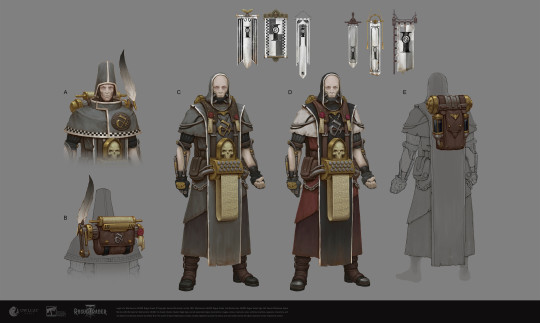
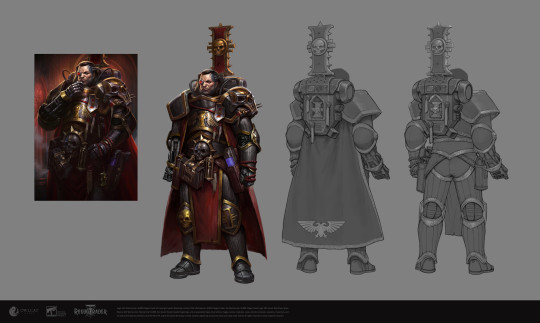
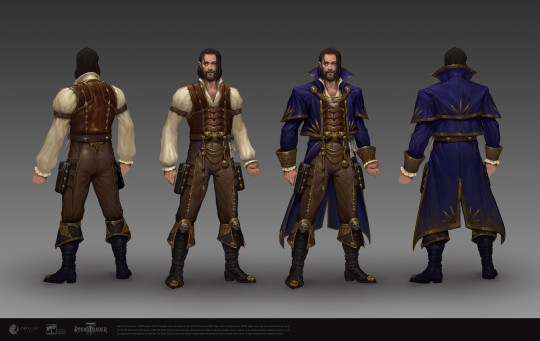
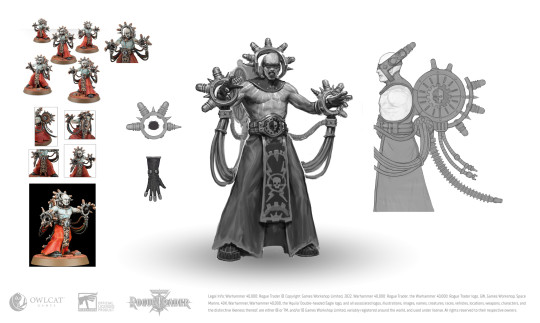
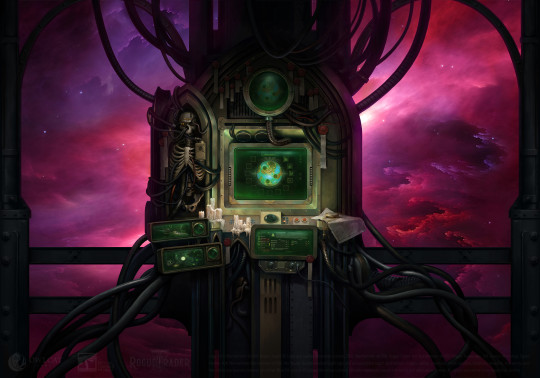
Adept Of The Administratum / Inquisitor / Scoundrel / Electro-Priest
by Ilya Bodaykin
#imperium#administratum#inquisition#common people#adeptus mechanicus#techpriest#electropriest#locations#warhammer#warhammer 40k#warhammer 40000#40k#ilya bodaykin#illustration
178 notes
·
View notes